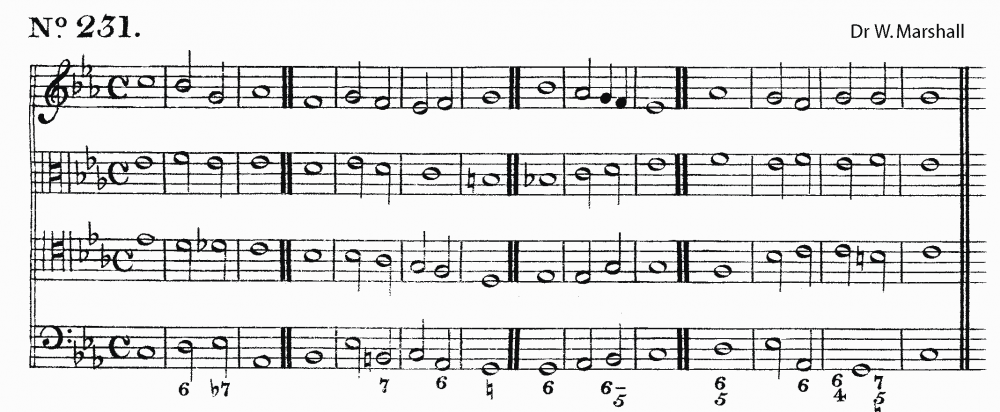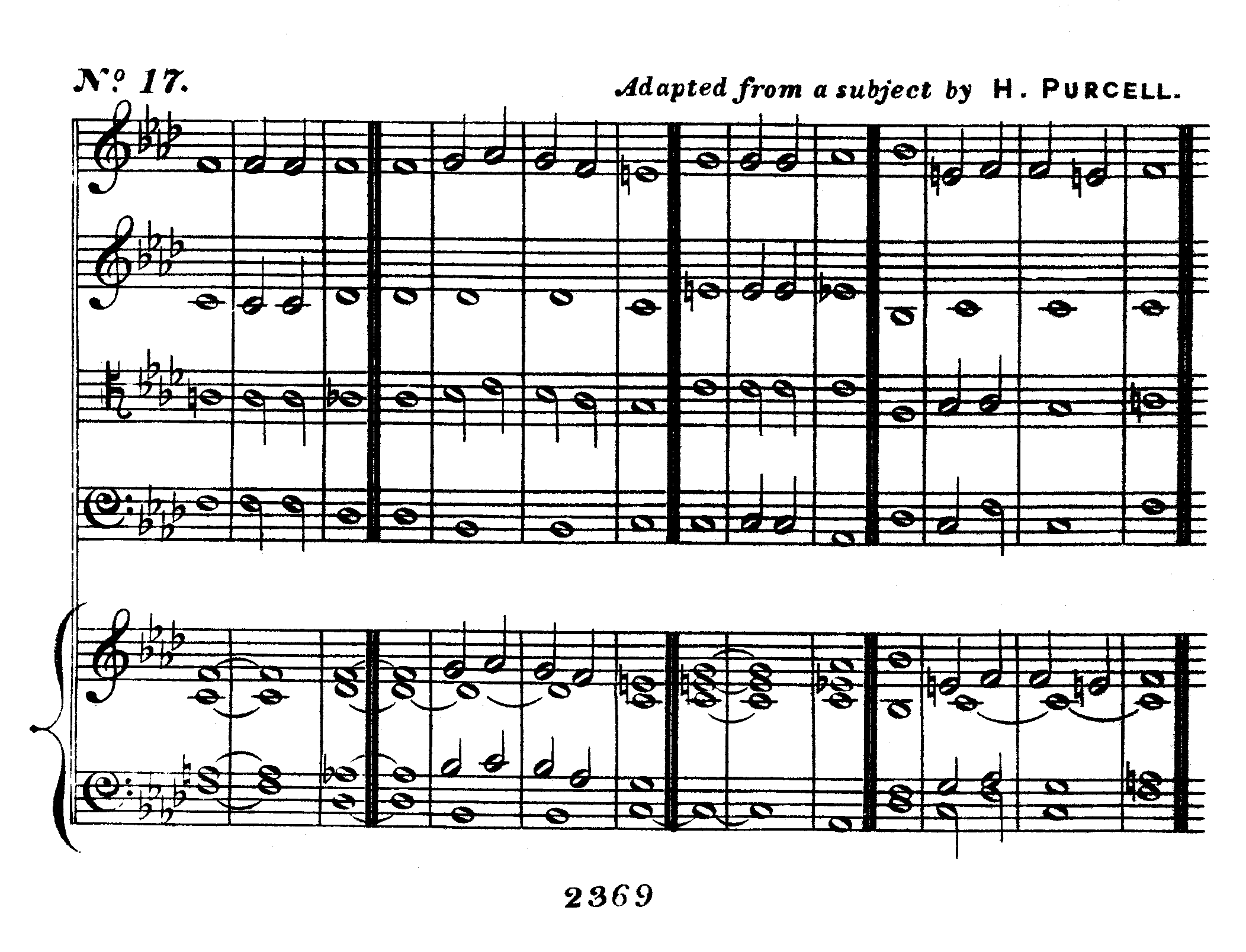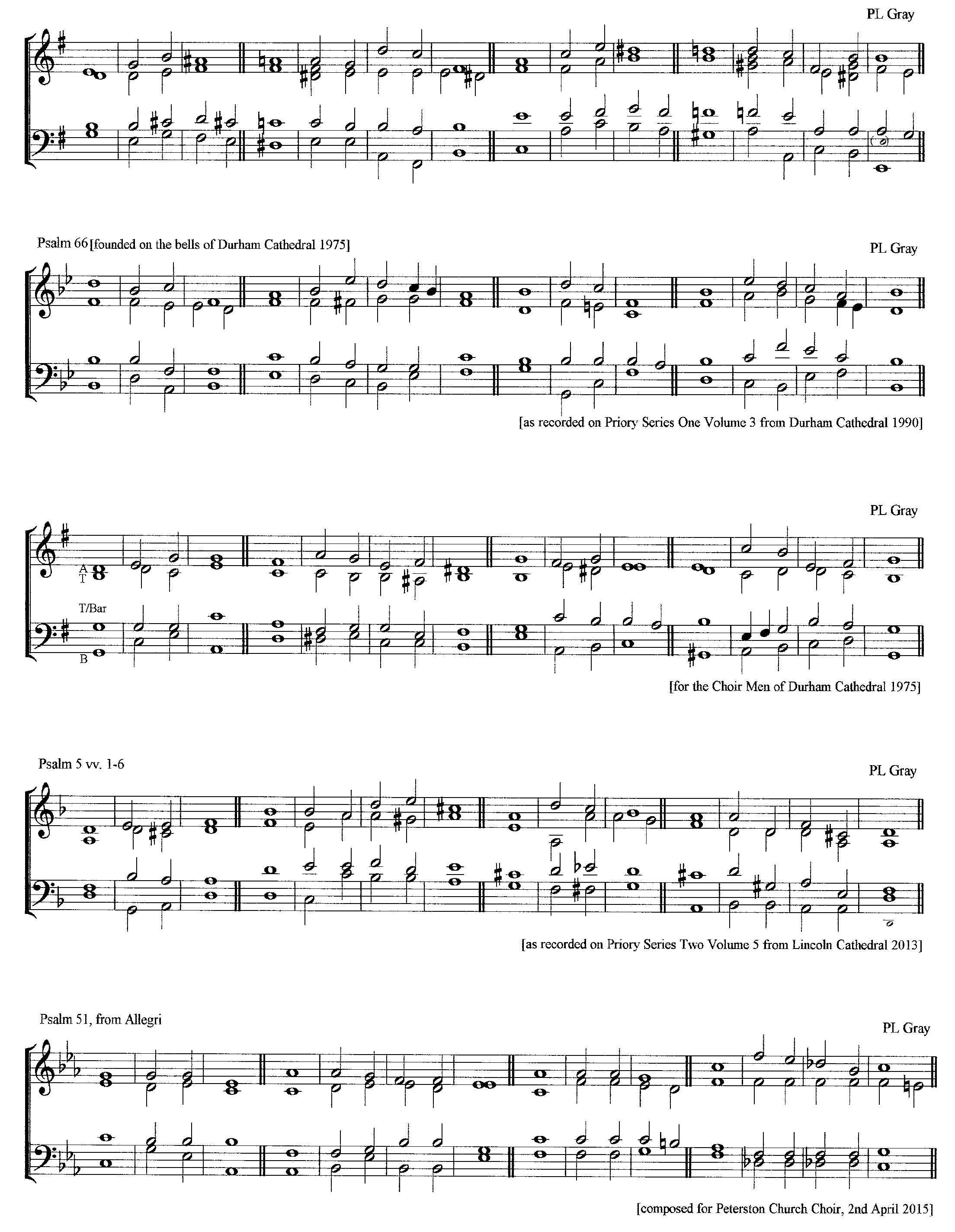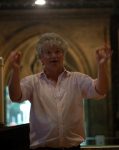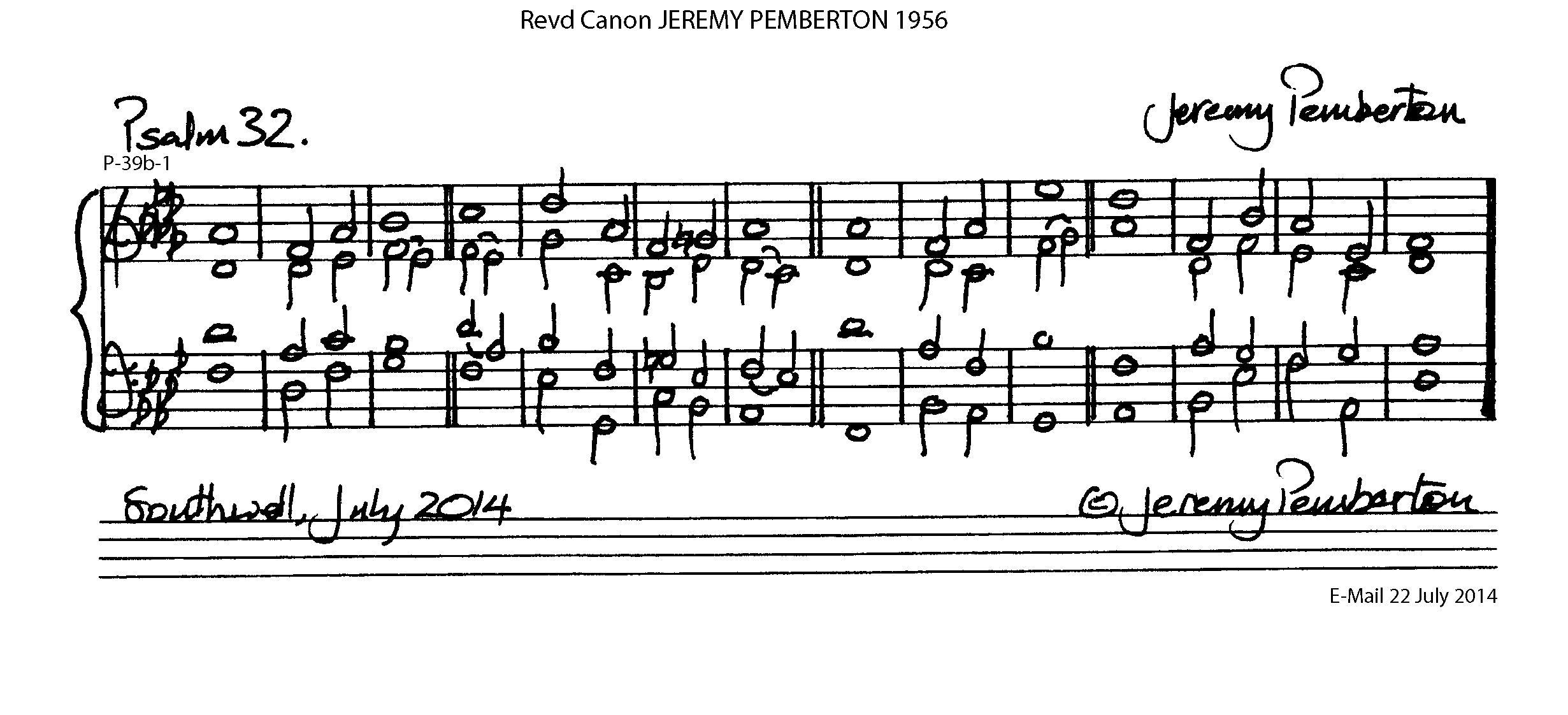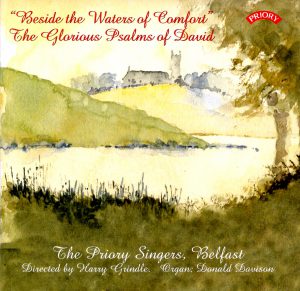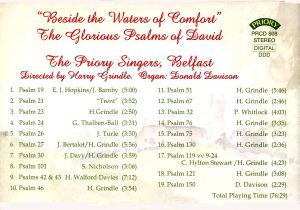Psalm Memories
from George Arthur
 The late Bishop Stephen Sykes once said to me that a church choir is only as ever as good as its psalms. This sentiment, shared by many has formed the back-bone of my own commitment to the peculiarly Anglican system of singing the psalms to chant. It is truly a jewel in our choral crown and something which seems to be forever evolving and something that always demands more rehearsal!
The late Bishop Stephen Sykes once said to me that a church choir is only as ever as good as its psalms. This sentiment, shared by many has formed the back-bone of my own commitment to the peculiarly Anglican system of singing the psalms to chant. It is truly a jewel in our choral crown and something which seems to be forever evolving and something that always demands more rehearsal!
The wealth of short musical exercises which constitutes the canon of Anglican Chants are more than the sum of their parts; they do not just act as a vehicle for delivering the words of the Psalms but can influence our interpretation of the texts and some chants have a deep and personal resonance for those of us lucky enough to sing, rehearse and listen to them over the years. Somehow, the repetition of simple progressions and attractive melodies engrain in us these ancient prayers in a way that plainsong does not. The skill involved in their delivery is quite unlike any other challenge in a church choir.
A full explanation to eager young choristers often imparts a sense of bewilderment and the familiar response: ‘I will never be able to get the hang of this!’ And yet, almost by osmosis, the system and method of chanting this way quickly becomes second nature and part of who we are as Anglican choristers.
Anglican Chant is to be celebrated, cherished and above all else: practiced. The integration of new chants alongside staples should be encouraged in order to keep this tradition fresh and alive so that this treasury in liturgical music may endure for years to come.
from John Lawson Baker (1939-2015)
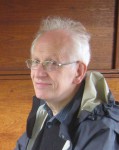 My first encounter as a 10-year-old choirboy with Anglican Chant was the English Psalter (edited by Bairstow) which played havoc with the Prayer Book verse divisions and used Roman numerals (only!) to identify the psalms. This was even more traumatic for the congregation who (being parish, not cathedral) were expected to join in using their (unpointed) BCPs. Eventually a kind member of the congregation treated them to pointed psalters, whereupon one of the first actions of our new organist was to change to The Oxford Psalter.
My first encounter as a 10-year-old choirboy with Anglican Chant was the English Psalter (edited by Bairstow) which played havoc with the Prayer Book verse divisions and used Roman numerals (only!) to identify the psalms. This was even more traumatic for the congregation who (being parish, not cathedral) were expected to join in using their (unpointed) BCPs. Eventually a kind member of the congregation treated them to pointed psalters, whereupon one of the first actions of our new organist was to change to The Oxford Psalter.
The chant book used was the Novello New Cathedral (the red oblong format dating from 1909 and based on the St Paul’s Cathedral Book), safely mainstream for the time but missing a few gems – the only one I recall added in MS being Bairstow’s well-known B flat major double.
The next church choir I sang in as a student used Conrad Eden’s Durham Chant Book. This introduced me to a much expanded repertoire, including in MS several of our organist’s own. His name was Martindale Sidwell and was Director of Music at Hampstead PC and St Clement Danes.
A brief spell in Winchester introduced me to David Lewis, organist of St Paul’s there, and to the Cathedral Organist, Alwyn Surplice. Whilst there I compiled for David’s choir a collection of 100 chants based on the various sources I had come across.
A move to Kent introduced me to Rochester Cathedral choir where I sang as both supernumary and deputy under both Robert Ashfield and Barry Ferguson, both consummate composers of chants, and whose interpretation of the psalms was in my opinion unparalleled. I have been most fortune to experience wherever I have lived and sung the experience of Anglican chanting at the highest level.
from Pam Barrowman, Chorister, St Mary’s Cathedral, Glasgow
PSALMS
Miles Coverdale’s peerless translation of the Psalms of David has been part of my life as long as memory serves. As a child I explored a vocabulary far, far richer than that of Enid Blyton, even surpassing Beatrix Potter’s challenging use of ‘soporific’. How could these compare with ‘abominable’, ‘righteousness’ and ‘Leviathan’?
Teenage years introduced me to the drudgery of the unimaginative use of bad pointing, in the form of the New Cathedral Psalter. ‘New’? we scoffed, ‘this came out in 1910’! As we trudged through a limited repertoire of psalms, gabbling and thumping as was surely encouraged by the bold print emphases and bar-lines placed more for convenience than meaning. Enlightenment came when, on moving to Glasgow to study music at the University there, I joined the choir of St Mary’s Cathedral. Here, under the direction of exceptionally gifted choirmasters I learned that, with precision and care, these texts could express, with an immediacy and drama to be found neither in oratorio or opera, emotions still living and raw millennia after they were written. By the judicious placing of a line, the words I had loved as a child might dance and rejoice, plead or mourn bitterly in combination with the infinitely flexible and abundant resource of the Anglican chant.
Which song of Schubert can equal the darkness conjured by the comination of of Psalm 130 – De profundis – with a chant derived from Purcell? Which triumphal march by Verdi express the confidence of Psalm 29 set to Attwood in A flat major? Every day these universal stories are gloriously retold in cathedrals up and down the land, a peculiarly English expression of faith which should be nurtured and celebrated by us all.
from Sebastian Carrington
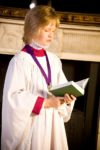 I'm a thirteen year old boy treble who’s been singing with Coventry Cathedral for the past three years. Aged ten I became the youngest person to achieve ABRSM grade eight singing with distinction. I study piano, music theory and composition, and have performed at Buckingham Palace.
I'm a thirteen year old boy treble who’s been singing with Coventry Cathedral for the past three years. Aged ten I became the youngest person to achieve ABRSM grade eight singing with distinction. I study piano, music theory and composition, and have performed at Buckingham Palace.
I began learning the pipe organ five years ago and I'm now an assistant organist at three parish churches in Leicestershire.
from Lindsay Gray
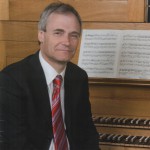 I have loved hearing, singing and playing Anglican chant for as long as I can remember.
I have loved hearing, singing and playing Anglican chant for as long as I can remember.
I first encountered psalm chants as a village choirboy at Stanton-on-the-Wolds, South Nottinghamshire, and from the beginning I particularly liked the dark, solemn chants in minor keys (such as featured below) and my first attempt at writing a chant appeared in the key of B minor. I quickly realised that composing Anglican chant is a great way of starting to write in harmony. My love of Anglican chant continued during my time as a young counter-tenor in the choir of St Peter’s and, later St Mary’s, Nottingham where I particularly adored the B flat minor chant by Charles Macpherson with its grinding clashes between the soprano and alto parts, and at Southwell Minster, where Goss in E minor, still used in their stunning version of Psalm 78 at ‘when God heard this he was wroth’, still rings most vividly in my memory!
At King’s College, Cambridge I was lucky enough to experience daily the wonderful psalm interpretations of Sir David Willcocks and Sir Philip Ledger – who could not be deeply moved by Sir Walford Davies extraordinary melancholy chant in D sharp minor set to Psalm 130, followed by Sir David’s own plangent single chant which is so appropriate for the humility and solemnity of Psalm 131?
As a postgraduate student in Durham, I relished sharing the love of chants (as well as my passion for cricket) with Richard Lloyd, and feel very honoured that James Lancelot still uses my chant for Psalm 66 each 12th Evening, a chant composed late one night in the Close and consequently based on the chimes of the cathedral clock!
Later as Headmaster of The Cathedral School in Llandaff, it was a great pleasure to set a number of chants when I formed and directed the girl choristers in 1995 and then, more recently, as Director of the RSCM I had many wonderful opportunities to hear Anglican chant across the world from the suburbs of Sydney, Australia to the townships of Paarl in South Africa.
I would like to close by saying what a wonderful job Peter Kirk does in acting as the ‘Guardian of Anglican Chant’, with his amazing store of 17350 chants but also inspiring us all in a form of composition which, I hope and trust, will continue to be sung in many places for years to come.
The first Chant was especially composed for Peter Kirk and this website
from Robin Helliwell
 In 1985 I moved house and at once sought out my local parish church, which, by a mere fifty feet, (the right side of Forest Road,) turned out to be St Matthew’s Church, Blackmoor in Hampshire, just adjacent to the garrison town of Bordon – a beautiful, Gothic revival Victorian building in a rural setting on Lord Selborne’s estate, its building commissioned by the first holder of that title and consecrated in 1869, the height of the Oxford Movement. Even then, thirty years ago almost, I was surprised to find a four part mixed choir still very much extant in a small village church. I joined at once a choir that sang traditional hymns in four part harmony and an occasional anthem, unconducted. It was directed at that period by the then incumbent, whose time was obviously limited by his parish duties, but it was, at least still functioning.
In 1985 I moved house and at once sought out my local parish church, which, by a mere fifty feet, (the right side of Forest Road,) turned out to be St Matthew’s Church, Blackmoor in Hampshire, just adjacent to the garrison town of Bordon – a beautiful, Gothic revival Victorian building in a rural setting on Lord Selborne’s estate, its building commissioned by the first holder of that title and consecrated in 1869, the height of the Oxford Movement. Even then, thirty years ago almost, I was surprised to find a four part mixed choir still very much extant in a small village church. I joined at once a choir that sang traditional hymns in four part harmony and an occasional anthem, unconducted. It was directed at that period by the then incumbent, whose time was obviously limited by his parish duties, but it was, at least still functioning.
On the evidence of the music in the vestry cupboard it had clearly been more than that – there were copies of the Parish Psalter, canticles by Stanford, Walmisley and Hylton Stewart and anthems by such as Tallis, Bach and Brahms.
I was asked to take over the choir about five years later, on the vicar’s retirement and, having an organist who wished only to accompany, I was free to conduct. We are fortunate indeed only to have one change of organist in that time and, when she was unavailable, two assistants ensure that we were never lost for accompaniment. At present we sing an anthem every week, with few exceptions and Choral Evensong three or four times a year. The choir’s repertoire has expanded to about a hundred and twenty items and ranges from the sixteenth century through to today.
Choral Evensong was reintroduced as part of our pattern of Sunday evening services about ten years ago, with the co-operation of an enthusiastically musical traditional vicar. When he moved on three years ago, I took it upon myself to learn the President's part so that these services could continue during the interregnum, a role I still play today, as our present incumbent is not a singer.
Anglican Chant had been sung sporadically and some members of the choir were familiar with the pointed psalter so it was relatively straightforward to teach the whole choir the necessary skills. Singing at least three Evensongs a year means that we are able to keep our psalm singing abilities up – any less would be problematic. That also means that a psalm can be included in the Eucharist (as do Guildford Cathedral), perhaps for a festival.
There are of course issues with singing traditional Anglican Chant on a Sunday morning. Even the older members of our congregation, with a couple of exceptions, cannot read a pointed psalm. Younger people find the whole idea anachronistic, so the idea of getting the whole congregation to join in is unrealistic. Over the years, this growing problem with changing worship styles has been addressed in various ways to make it easier for congregations to cope, such as Responsorial Psalms or, of course, not singing them at all. We have adopted the cathedrals' solution – we sing: they listen! To those who object on the grounds of non-participation I say since when has listening to scripture, said or sung not been part of worship? Thus our evensongs take the fully choral form, based on the 1662 language with sung responses, canticles, psalm and anthem – our aim, to allow the congregation to concentrate on their own inner worship.
Robin Helliwell
Choirmaster
St Matthew’s Church, Blackmoor and Whitehill
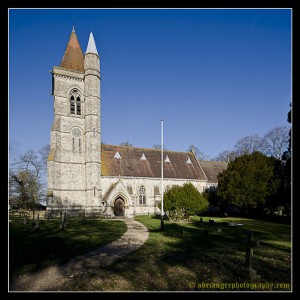 St Matthew’s Church, Blackmoor and Whitehill, Hampshire
St Matthew’s Church, Blackmoor and Whitehill, Hampshire
from David Cynan Jones
Like many of us my introduction to Anglican Chant came care of the Cathedral Psalter of Flood-Jones, Turle et al. singing the Te Deum to Woodward, Smart and Turle as a teenager alongside the others set for the Morning and Evening Canticles. I think I only realised that there was a treasury of other chants available when I began visiting Brecon Cathedral with my late father when my voice broke when I was about 13 or 14 years old. My father and David Gedge had been friends for some years and had taken the Treorchy Male Choir to Brecon to sing in fund raising concerts for “Gedgie”. David’s wife Hazel, herself a fine organist, had accompanied his choir on television and radio recordings and LPs issued on the EMI label as well. He would often pick up the telephone after lunch on Sunday and ask what was on the service list that afternoon before making the 30-mile trip over the Brecon Beacons. On one particular afternoon, Gedge informed us that we would be welcome “but one of you will have to sing alto as we’ve got plenty of bass…”. And from then on, I discovered a love affair with the countertenor voice that would lead me to sing in Llandaff Cathedral as a choral scholar and later as a singing man and also with Brecon singing at services on residencies in York, Truro and Canterbury to name but a few. One of the highlights was to perform Walton’s Coronation Te Deum at the Festival of the Sons of the Clergy under the baton of the late John Scott with the combined choirs of St Paul’s, Norwich and Manchester Cathedrals.
Collecting chant books and psalters has always been a hobby of mine and I have been indebted to cathedral organists in allowing me access to their collections. Had the sophisticated reproducing equipment we have today been available in the 1980s and 90s my collection would have been greater. The psalm singing under Philip Ledger at King’s and George Guest at St John's was a huge influence as was Bernard Rose at Magdalen, Simon Preston and Francis Grier at Christ Church, Oxford, Stanley Vann at Peterborough and Martin Neary at Winchester.
Since visiting Christ Church Cathedral, Oxford in early 1980 I've have a great affinity with the psalms for the Thirteenth Evening and the chants set by Henry G Ley, Sydney Watson and Simon Preston for psalms 69 and 70. The first portion vv.1-29 is sung to probably my favourite chant, the double in E minor by Sir John Stainer.
 It suits the psalm so well with haunting verses such as verse 8
It suits the psalm so well with haunting verses such as verse 8
I am become a stranger | unto · my | brethren :
Even an alien | unto · my | mo – ther's | children.
and verse 19
Draw nigh unto my | soul · and | save it :
O de- | liver me · be- | cause of · mine | enemies.
It is contrasted in verse 30 with the exuberant chant by William Hawes with the first quarter leaping like a salmon.
 We return to the sombre text of psalm 70 and the genius of Samuel Sebastian Wesley with a single chant in E minor.
We return to the sombre text of psalm 70 and the genius of Samuel Sebastian Wesley with a single chant in E minor.
Such a simple chant but so concise and succinct. One wonders what English church music would look like today without his immense legacy. I was so bowled over by this combination that I made a return journey the following month just to hear them again.
On my appointment to leadership roles in the primary education sector in the early part of the “noughties”, my hobby and ability to dedicate the time necessary to sing at this level saw my involvement diminish.
A few years ago I decided to relinquish my role as a primary head teacher on health grounds. One of the things that I have been able to reapply myself to during my rehabilitation is to re-engage with attending evensongs at cathedrals in my surrounding area. With the advent of the Internet, researching has become easier and the willingness of libraries to make iconic collections available has seen my collection grow substantially.
I then became aware of “The Chantman” through joining the Anglican Chant Appreciation Society. My new superhero with his special powers and Pandora’s Box of chant books and psalters of differing shapes and sizes opened a new world to my interest. It’s been a great pleasure to act as a research assistant to him locating ancient sources such as collections by George Cleland and William Cross and many others held in special collections in American and Canadian university libraries through to recent chants composed by Toby Matimong, Harold Thalange and female composers such as Sasha Manning Johnson and Anna Semple. Peter’s encouragement and support is infectious, and I always look forward to his messages and emails. I am proud and privileged to have been asked to become a patron of the archive and will continue to support him in developing this fabulous resource.
from Matthew Larkin
I spent much of my childhood singing treble in the choir of St George’s Cathedral in Kingston. One of Canada’s most historic cities, Kingston has been home to an Anglican cathedral since 1862 (the parish having been founded in 1791), and for the greater part of the twentieth century the cathedral men’s and boys’ choir was one of the nation’s signature choral ensembles. In my treble days we were responsible for singing three Sunday services (matins, eucharist and evensong) and evensong on Wednesdays. Our practice was to sing all the psalms, as appointed, to Anglican Chant, and my first attempts at musical composition were in the form of these chants. I first noticed around this time that there was a kind of informal association made between certain chants and certain psalm texts, rather in the way that some congregations associate specific hymn tunes with specific words, and to this day I think of Ps. 23 as sung to Hylton Stewart, Ps. 84 to Edwards, Ps. 121 to Walford Davies, and so forth. While I realise that different cathedrals and churches have their own traditional associations in this way, the ones I grew up with tend for me to remain the same in my mind. Some decades later, now as the DofM of the cathedral in Canada’s capital city, we maintain a similar pattern of worship (now the only men’s and boy’s choir in a Canadian cathedral), and we sing the appointed psalmody to Anglican Chants almost all of the time (we will, on occasion, use Gregorian Tones).
Many – or indeed, most – Canadian churches and cathedrals have replaced Anglican Chant with either the aforementioned plainsong tones, responsorial melodies, or other forms. While I cannot speak to everyone’s motivations for doing so, it seems that churches where catholic-style liturgical practices are found tend to use plainsong as a complement to that aesthetic, and other churches use simpler forms as a means of making psalmody ‘accessible’ to people who, in the view of worship leaders, lack the ability or motivation to enter into traditional Anglican chant-singing fully or willingly (I know this is not unique to Canada). I believe this to be unfortunate on many levels. The singular beauty of Anglican-chant singing is now something that few worshippers experience, and as well, a remarkably unique feature of our Anglican musical heritage is lost on at least two generations of church-goers.
With my own choristers, I always rejoice in that moment when a young person (upon receiving the psalm or psalms of the day to rehearse) no longer looks first at the potentially daunting number of verses to be sung, but instead comments on the chant(s), recognises the words and the story contained therein, and seeks to render the text and the music beautifully as befitting an artist in service.
For us, the psalms are the foundation of our musical heritage as Christians, and the tradition of Anglican Chant is the foundation of this same heritage as Anglicans. Most delightfully, our practice is reinforced every two years with a UK cathedral residency, where we have the great privilege of upholding for the length of our time there the daily tradition of rendering the Psalms in these historic places of worship.
(permission received with thanks, 9th December 2014)
from Jonathan Neil-Smith
 ANGLICAN PSALM CHANTS
ANGLICAN PSALM CHANTS
My first experience of chanting psalms was in my late father’s church in Hampstead. We hadn’t much of a choir; indeed, all our family was ‘press ganged’ into it. We led the congregation in singing traditional chants for the Venite (Psalm 95), the Te Deum and the Jubilate (Psalm 100). We occasionally branched out into a wider variety of psalms. But looking back on it, it just seemed a normal, unaffected part of worshipping God, as natural as praying, listening to sermons or singing hymns. But it was during my three years as an undergraduate at St John’s College, Cambridge that I became aware of just how much psalms, well sung by a ‘proper’ choir, could add to worship. I refer, of course, to the liturgy and music of the College Chapel during the latter part of the legendary Dr George Guest’s tenure as organist. I enjoyed singing but was not nearly good enough to be a member of the world-famous College Choir, but I – along with a nucleus of regulars – attended the Chapel almost daily during term time. The psalms singing – all from the Book of Common Prayer to traditional Anglican chants – was not only intensely musical but sounded so natural, and gave vent to the full range of human emotions. In his memoir A Guest at Cambridge [Paraclete Press, 1994] George Guest emphasises that ‘…every musical performance of every psalm should, ideally, be given in such a way as to enhance the meaning of the text. Purely musical considerations should always occupy a subsidiary position by comparison with this all-important concept’ (page 167).
It was fortunate that Decca (originally on the Argo label) recorded a lovely disc of St John’s Choir singing psalms just before I was there, so what I heard has been well captured for immortality. It was originally released as Psalms of Consolation and Hope (ZRG 982), but all the psalms on it have been reissued on Decca’s World of Psalms.
from Revd Jeremy Pemberton
 My earliest musical memories are associated with being a chorister at Bartholomew’s Church, Wilmslow. It was there I learnt to chant psalms, and did so as a decani chorister at Matins and Evensong each week. That all lasted until I was thrown out for fighting in the vestry!
My earliest musical memories are associated with being a chorister at Bartholomew’s Church, Wilmslow. It was there I learnt to chant psalms, and did so as a decani chorister at Matins and Evensong each week. That all lasted until I was thrown out for fighting in the vestry!
Boarding school reintroduced me. There is something rather unusual and moving about the sound of six hundred young men all belting out chanted psalms. School also used to use Stanford in B flat sung congregationally – an awesome sound. University taught me a more sophisticated approach to psalm singing. The rather square, metronomic approach of the parish, which was never entirely overcome at school, was transformed by discovering choirs where the music fitted the rhythm of the words and enhanced them. Christ Church to listen to and for singing, my own home college Merton and New College, where I sang as a volunteer in my final year. Merton was also the place I learned about singing and using plainsong in the Liturgy. Most of my life since then has been as an ordinand and then priest of the Church of England. I have always loved using chanted psalms when ever I could, i.e. whenever there was a competent choir about. It has also meant finding and using other ways of singing with congregations poetry that was always meant to be sung. In my retreats I have always valued going to monasteries where plainsong was standard for the Daily Office (thank you Turvey, Worth and Burford). In the parish it has meant using responsorial psalms, metrical psalms and psalm songs.
Psalms tell us about ourselves before God in all moods, attractive and noble. Cruel and despairing, doubtful and faith-filled – they are, and always have been at the heart of the Christian spirituality. We sing them with and to others for our mutual spiritual health. My extraordinary happiness in later life has been to become a lay clerk in one of the great cathedrals. There are many things that make our cathedral music tradition glorious, but to sing the psalms daily (New College / Rochester / Southwell Psalter) is one of the greatest. My favourite Evening? The fifteenth, of course!
Revd Canon Jeremy Pemberton
Cantoris Bass Lay Clerk
Some chants from Southwell Minster musicians
 William Lee, c.1699-1754 (Rector Chori, 1721-1754)
William Lee, c.1699-1754 (Rector Chori, 1721-1754)
 Dr Edmund Ayrton, 1734-1808 (Rector Chori, 1755-1764)
Dr Edmund Ayrton, 1734-1808 (Rector Chori, 1755-1764)
 Samuel Spofforth, c.1780-1864 (Chorister at the Minster, c.1788-1795)
Samuel Spofforth, c.1780-1864 (Chorister at the Minster, c.1788-1795)
brother of Reginald Spofforth, 1770-1827 and
nephew of Thomas Spofforth, c.1742-1826
from Philip Prosser (1946-2020)
IN JOY OR SORROW?
After sixty years of singing, I’m sure I’m not alone in witnessing big changes in the way directors of music and their choirs approach the psalms. The advent of easily accessible recordings that began with King's has done much, in my opinion, to foster a greater interest in pointing chants and good psalm singing. The only downside of those wonderful recordings is the use of the same psalms and beautifully written chants by many choirs to the exclusion of other fine compositions. I will happily concede Sir David Willcocks own chant to Psalm 131 and Sir Henry Walford Davies for Psalm 121 might be considered notable exceptions.
This will upset many devotees of Anglican Chant but in all honesty many in regular use are quite boring. This is because in the past and maybe even now, not everyone feels psalms are very important. There are so many people who can write new and original chants, among them my musical mentor and great friend, the late Dr Harry Grindle. Harry, a man of great faith, wrote original chants that are not only beautifully crafted, but interesting, original and always a great pleasure to sing; some happily committed to CD by Harry’s own chamber choir, The Priory Singers.
I know every DofM wants to put his or her musical stamp on the psalms, but isn’t it true most cathedrals have their own chant books complete with the appropriate psalms that almost inevitably mean the same ones year in and year out? Continuity and familiarity may help the daily cycle of music but I’m doubtful if too many new chants are high on the list of musical priorities. One reason given to me by a cathedral organist was that for his boys the psalms were subliminal, although this is surely an unintended injustice to remarkable young people, boys and girls who cope with much more complex music on a daily basis. I am, as my close friends will know, an enthusiastic, untrained amateur musician who loves psalms but who has spent all his working life on the instruments that accompany them. Writing fourteen bars or less of music is an interesting challenge with the occasional reward of hearing the results sung in a church or cathedral. My sadness is that through practical necessity we are unlikely to hear all but a few of the many wonderful new contributions, many by members of this group, sung by our best choirs, except as part of recordings, or an occasional one off on Wednesday's BBC Radio 3 Choral Evensong. Maybe a recording of the Psalter that contains unpublished chants might be possible one day and will encourage choirs to choose their own new chants.
Phil Prosser
from Jason Smart
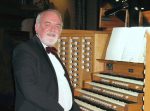 SIDNEY CAMPBELL'S PSALM ACCOMPANIMENTS
SIDNEY CAMPBELL'S PSALM ACCOMPANIMENTS
My love of Anglican chant evolved during three years I spent as the organ scholar at St George’s Chapel, Windsor, under the legendary Dr Sidney Campbell (1909-1974). Back then, in 1969-1972, weekday Matins was already disappearing from our cathedrals, but Windsor still sang it four times a week, so I was able to experience all the psalms, morning and evening. The chant book then in use was Charles Hylton Stewart’s A Collection of Chants (1930) with a great many alternatives pasted or Sellotaped in. The psalter was The Oxford Psalter. I was particularly impressed by how often the chosen chants perfectly matched the words.
Dr Campbell was one of those old-school Organists and Choirmasters who still did most of the accompanying themselves. He knew all the words, pointing and chants of the psalms by heart and his accompaniments were as kaleidoscopic as they were gymnastic. For the first two verses he would play each chant as written, but after that anything could and did happen. The chords would be constantly rearranged in different positions – now bunched into his right hand at the top of the keyboard on an 8' flute with a clarinet solo in the left hand, now down in the tenor register with a 4' flute solo in the right. Then before you had time to draw breath he would be accompanying himself while improvising a descant on a Pedal solo stop. On one occasion this was the Kornet 2' – an odd choice, I thought, since it is a penetrating tone! The colours and textures (and manuals) were constantly changing to reflect the words, the stops being changed mostly by hand. All of this was extempore and without batting an eyelid – and without producing any consecutive fifths or octaves. What a remarkable musician he was. Another version of this chant also exists in a choral leaflet by Novello and Co. The version here is the one he used at Windsor and the one that he regarded as being definitive.
 Dr Sidney Scholfield Campbell (1909-1974)
Dr Sidney Scholfield Campbell (1909-1974)
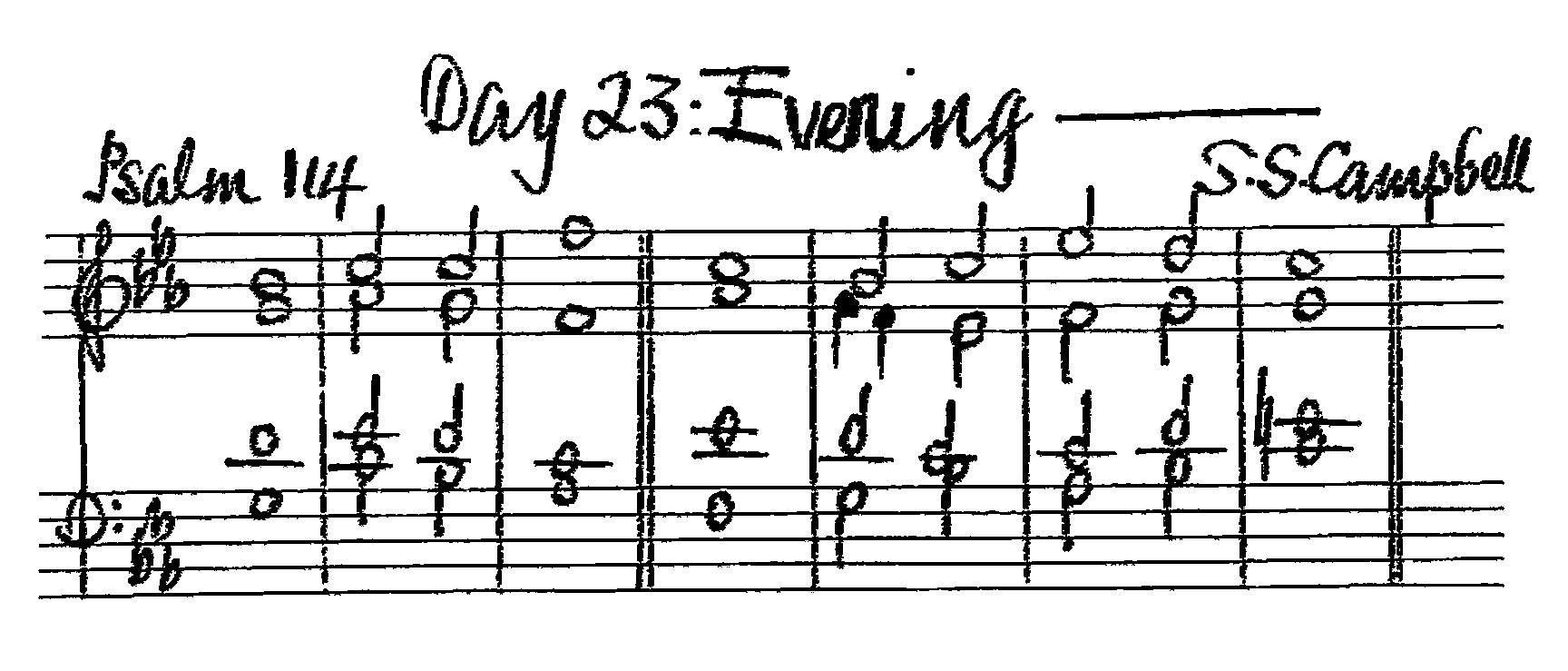 From a dateless St George’s Chapel, Windsor chant book
From a dateless St George’s Chapel, Windsor chant book
